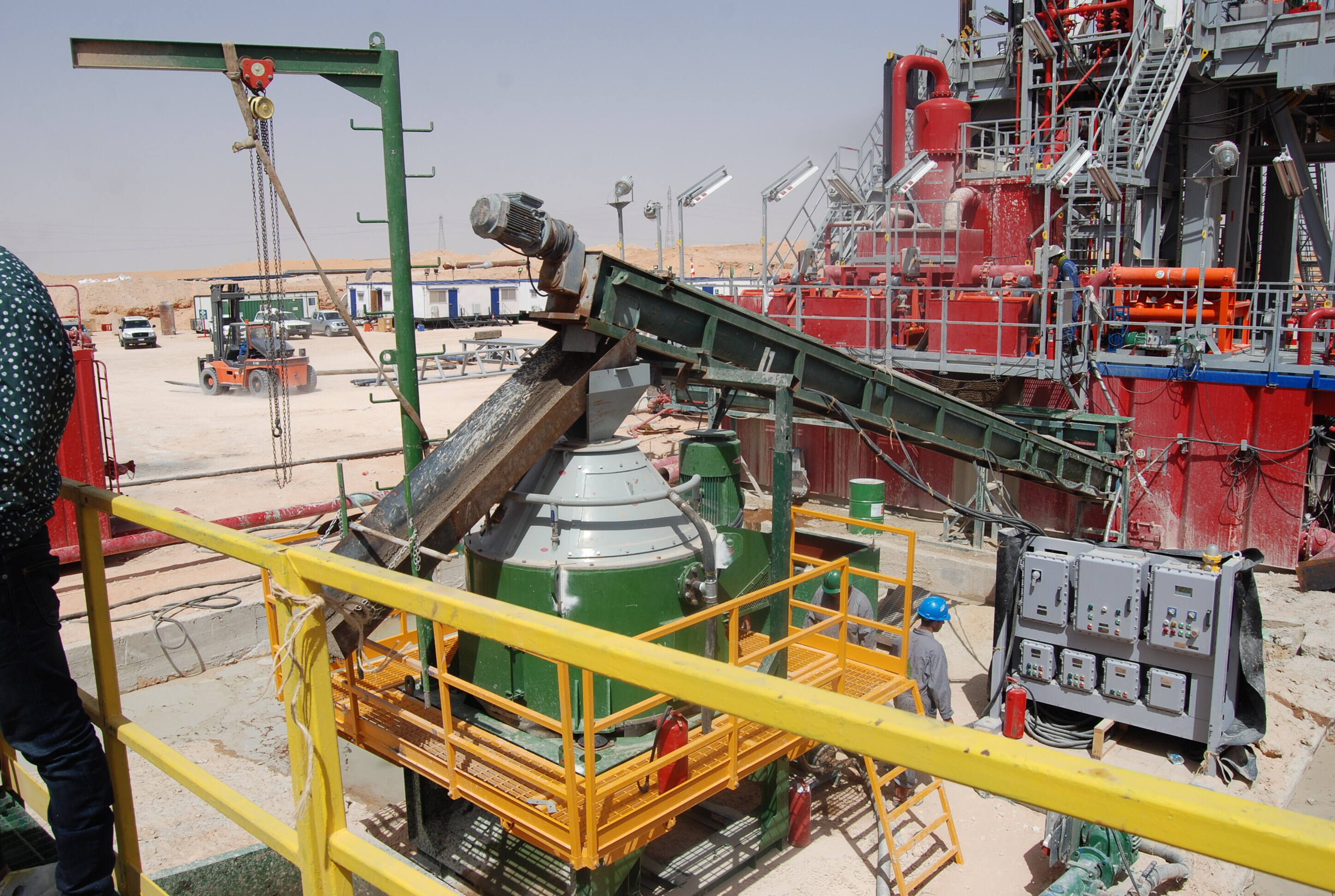Նորամուծություններ, որոնք վերափոխում են ժամանակակից Դրիլինգի աղումների հաստատում
Նավթի և գազի արդյունաբերությունը վերջին տարիներին արձանագրել է հորատման աղբի վերահսկման տեխնոլոգիաների բնագավառում արձանագրված արդյունաբերական առաջընթացներ: Այս նորամուծությունները վերաձևակերպում են ընկերությունների կողմից հորատման աղբի վարման, մշակման և ոչնչացման ձևերը փորման աղբ մինչդեռ պահպանվում է շրջակա միջավայրի հետ համապատասխանությունը և գործողությունների արդյունավետությունը: Քանի դեռ շրջակա միջավայրի վերաբերյալ կանոնակարգերը ավելի խիստ են դառնում, իսկ կայունության նպատակները՝ ավելի համարձակ, արդյունավետ հորատման աղբի վերահսկման կարևորությունը չի կարող չափազանցվել:
Ժամանակակից փորման գործողությունները առաջացնում են աղբի մեծ քանակություն, ներառյալ փորման մանրաթելեր, վատնված փորման հեղուկներ և կեղտական նյութեր: Խնդիրը կայանում է ոչ միայն այդ թափոնների կառավարման, այլ նաև այնպես կառավարելու մեջ, որ նվազագույնի հասցնի ազդեցությունը շրջակա միջավայրի վրա՝ առավելագույն արդյունավետությամբ: Սա բերեց նորատիպ տեխնոլոգիաների և մեթոդների ստեղծմանը, որոնք փոխակերպում են փորման թափոնների վերահսկման ոլորտը:

Բարձրակարգ ջերմային մշակման համակարգեր
Կրկնակի մշակման միավորներ
Ջերմային դեսորբցիայի տեխնոլոգիան փորման թափոնների վերահսկման մեջ կատարելագործված մոտեցում է: Այս համակարգերը օգտագործում են ճշգրիտ վերահսկվող ջերմություն՝ հիդրոկարբուրները փորման մանրաթելերից և այլ պինդ թափոններից անջատելու համար: Գործընթացը սովորաբար իրականանում է 250°C-ից մինչև 350°C ջերմաստիճաններում, արդյունավետորեն հեռացնելով կեղտավորողներին՝ պահպանելով մշակված նյութերի ֆիզիկական հատկությունները:
Ժամանակակից ջերմային դեսորբցիայի միավորները բնութագրվում են բարելավված էներգաարդյունավետությամբ և ինքնաշխատ կառավարման համակարգերով, որոնք օպտիմալացնում են մշակման գործընթացը: Վերականգնված հիդրոկարբոնները կարող են վերադարձվել հորատման հեղուկի համակարգի մեջ, իսկ մաքրված պինդ նյութերը հաճախ համապատասխանում են բարենպաստ վերօգտագործման կամ անվտանգ հեռացման համար սահմանված էկոլոգիական չափանիշներին:
Միկրոալիքային մշակման տեխնոլոգիա
Միկրոալիքային մշակումը հորատման աղբի վերահսկման նորարական մոտեցում է, որն ունի մի շարք առավելություններ սովորական ջերմային մեթոդների համեմատ: Այս տեխնոլոգիան օգտագործում է էլեկտրամագնիսական ալիքներ՝ նպատակային ջերմաստիճանի նյութերի ըտրողական տաքացման համար, ուղղված ջրի և հիդրոկարբոնային մոլեկուլների վրա՝ էներգիայի սպառման նվազեցմամբ: Գործընթացը հատկապես արդյունավետ է յուղային կավի և աղտոտված հորատանցքերի մշակման համար:
Միկրոալիքային բուժման համակարգերի ճշգրտությունն ու արդյունավետությունը կտրուկ բարելավվել են. նոր սարքերը կարողանում են մշակել ավելի մեծ ծավալներ՝ պահպանելով համատեղելի որակի չափանիշներ: Տեխնոլոգիայի փոքրացված չափերն ու ցածր էներգետիկ պահանջները այն ավելի շատ են դարձնում հարկադրված հարթակների և ծովային կիրառությունների համար:
Քիմիական բուժման նորամուծումներ
Ընդլայնված օքսիդացման գործընթացներ
Քիմիական բուժման տեխնոլոգիաները զարգացել են ներառյալ բարդ օքսիդացման գործընթացներ, որոնք քայքայում են բարդ օրգանական միացությունները փորվածքների աղբում: Այս համակարգերը օգտագործում են օքսիդիչ նյութերի, կատալիզատորների և ՈՒՖ ճառագայթման համակցումներ՝ բուժման ավելի լավ արդյունքների հասնելու համար: Այս ոլորտի վերջին մշակումները կենտրոնանում են քիմիական նյութերի օգտագործման օպտիմալացման և բուժման արդյունավետության առավելագույն մեծացման վրա:
Ժամանակակից օքսիդացման համակարգերը ներառում են իրական ժամանակի հսկողություն և ավտոմատացված չափաբաժների վերահսկում՝ ապահովելու օպտիմալ մշակման պայմաններ: Այս ճշգրիտ մոտեցումը բարելավում է մշակման արդյունավետությունը և նվազեցնում է քիմիական նյութերի ծախսը և շահագործման ծախսերը:
Կայունացման և ամրացման տեխնոլոգիաներ
Նոր կայունացման և ամրացման տեխնոլոգիաները օգտագործում են առաջադեմ կապակցող նյութեր և բարդ խառնման համակարգեր՝ հեղուկ և կիսահեղուկ թափոնները վերածելով կայուն, արտահոսքից ազատ պինդ նյութերի: Այս համակարգերը կարող են մշակել տարբեր տեսակի փորման թափոններ, միևնույն ժամանակ ապահովելով, որ վերջնական արտադրանքը համապատասխանում է բացթողնման կամ օգտակար վերօգտագործման համար նախատեսված խիստ պահանջներին:
Վերջերս կապակցող նյութերի բաղադրության մեջ մտցված նորամուծությունները բարելավել են մշակման գործընթացի արդյունավետությունը՝ նվազեցնելով ավելացուցիչների անհրաժեշտ ծավալը: Այս առաջընթացը տեխնոլոգիան դարձրել է ավելի տնտեսապես արդյունավետ և էկոլոգիապես կայուն:
Մեխանիկական հանգումների տեխնոլոգիաներ
Բարձր կատարուղացման ցենտրիֆուգներ
Ցենտրոբեժ անջատման համակարգերի վերջին սերունդը ներկայացնում է հորատման թափոնների վերահսկման տեխնոլոգիայի մեջ կատարողական առաջընթաց: Այս սարքերը համալրված են բարելավված կոնաձև կառուցվածքներով, փոփոխական հաճախականության վերահսկողական համակարգերով և ինքնաշխատ կառավարման համակարգերով, որոնք ապահովում են անջատման արդյունավետության ավելացումը՝ նվազեցնելով էներգիայի սպառումը:
Ժամանակակից ցենտրոբեժերը կարողանում են ապահովել ավելի բարձր ցենտրոբեժ ուժեր և մշակել ավելի մեծ ծավալներ թափոններ, ինչի արդյունքում առաջանում են մաքրված ապրանքանիշեր և նվազում է թափոնների վերացման ծավալը: Ինտելեկտուալ վերահսկողական համակարգերի ներդրումը թույլ է տալիս իրական ժամանակում կատարել շահագործման պարամետրերի ճշգրտումներ տարբեր պայմաններում արդյունավետ աշխատանք պահպանելու համար:
Ավանդական ֆիլտրացիայի համակարգեր
Ֆիլտրման տեխնոլոգիան զարգացել է և ներառում է բարդ թաղանթային համակարգեր և հիբրիդ կառուցվածքներ, որոնք կարողանում են մշակել բարդ թափոնների հոսքերը: Այս համակարգերը համատեղում են բազում ֆիլտրման փուլեր՝ ինքնաշխատ հետընթաց լվացմամբ և ինքնամաքրման հնարավորություններով՝ ապահովելով կայուն աշխատանք մինիմալ սպասարկման պայմաններում:
Ամենանոր ֆիլտրման համակարգերը ներառում են խելացի հսկման համակարգեր, որոնք հետևում են ֆիլտրի աշխատանքին և կանխատեսում են սպասարկման կարիքները՝ օգնելով օպտիմալացնել գործողությունը և կրճատել դադարի ժամանակը: Առաջադեմ մեմբրանային նյութերը առաջարկում են բարելավված տևականություն և ավելի լավ անջատման արդյունավետություն, դարձնելով այս համակարգերը ավելի գործնական հորատման թափոնների վերահսկման կիրառումների համար:
Թվային ինտեգրում և ավտոմատացում
Կարիքավոր Նախադասումների Սիสเตմներ
Թվային տեխնոլոգիաները փոխակերպել են հորատման թափոնների վերահսկումը՝ ներառելով բարդ հսկողության և կառավարման համակարգեր: Այս համակարգերը օգտագործում են սենսորներ, տվյալների վերլուծություն և արհեստական ինտելեկտ ՝ իրական ժամանակում օպտիմալացնելու մշակման գործընթացները: Օպերատորները հիմա կարող են միաժամանակ հետևել մի քանի պարամետրերի և անմիջապես կատարել ճշգրտումներ՝ պահպանելու օպտիմալ աշխատանքի համար:
Վերջին հսկման համակարգերը ներառում են կանխատեսողական պահպանման հնարավորություններ և հեռահաղորդակցական հսկման հատկություններ, որոնք թույլ են տալիս օպերատորներին նույնականացնել և հասցնել հնարավոր խնդիրները, մինչև դրանք ազդեն գործողությունների վրա: Այս նախօրոք մտածված մոտեցումը օգնում է նվազագույնի հասցնել կանգառները և ապահովել մշտական մշակման որակը:
Ավտոմատացված պրոցեսի կառավարում
Ինքնաշխատ տեխնոլոգիան հեղափոխել է փոշու վերահսկման գործողությունները՝ ներմուծելով բարդ վերահսկման համակարգեր, որոնք ինքնաբերաբար օպտիմալացնում են մշակման գործընթացները: Այդ համակարգերը կարող են իրական ժամանակում կարգավորել գործառնական պարամետրերը՝ կախված աղբի հատկանիշներից և մշակման պահանջներից՝ ապահովելով համապատասխան արդյունքներ, մինչդեռ նվազեցնում են օպերատորի միջամտությունը:
Ժամանակակից ինքնաշխատ համակարգերը ներառում են մեքենայական ուսուցման ալգորիթմներ, որոնք անընդհատ բարելավում են գործընթացի արդյունավետությունը՝ կախված գործողական տվյալներից: Այս հնարավորությունը օգնում է նվազեցնել շահագործման ծախսերը՝ պահպանելով բարձր մշակման չափանիշները և էկոլոգիական համապատասխանությունը:
Հաճախ տրվող հարցեր
Ինչպե՞ս են ջերմային կլանման միավորները համեմատվում ավանդական աղբի մշակման մեթոդների հետ:
Ներկայացված մեթոդների համեմատ ջերմային դեսորբցիայի միավորները ավելի բարձր բուժման արդյունավետություն են ապահովում և ավելի լավ էկոլոգիական արդյունքներ: Դրանք կարող են մշակել ավելի մեծ ծավալով թափոններ, իսկ աղտոտողների հեռացման արագությունը բարձր է, իսկ մաքրված նյութերը կարող են օգտակար վերօգտագործվել:
Ի՞նչ են ավտոմատ հորատման թափոնների վերահսկման համակարգերի իրականացման հիմնական առավելությունները:
Ավտոմատ համակարգերը ավելի համապարփակ գործընթացների համապարփակություն, ցածր շահագործման ծախսեր և ավելի լավ էկոլոգիական համապատասխանություն են ապահովում: Նրանք նվազեցնում են մարդկային սխալները, օպտիմալ են դարձնում ռեսուրսների օգտագործումը և տրամադրում են մանրամասն կատարման տվյալներ կարգավորող հաշվետվությունների և համակարգի օպտիմիզացիայի համար:
Ինչպե՞ս են նոր ֆիլտրման տեխնոլոգիաները բարելավում հորատման թափոնների կառավարումը:
Առաջադեմ ֆիլտրման համակարգերը ավելի լավ անջատման արդյունավետություն են ապահովում, պահանջում են ավելի քիչ սպասարկում և կարող են մշակել ավելի մեծ թափոնների ծավալներ: Նրանք նաև ավելի մաքուր անջատված ապրանքներ են արտադրում և հաճախ ներառում են ինքնամաքրման հնարավորություններ, որոնք կրճատում են շահագործման դադարները:

